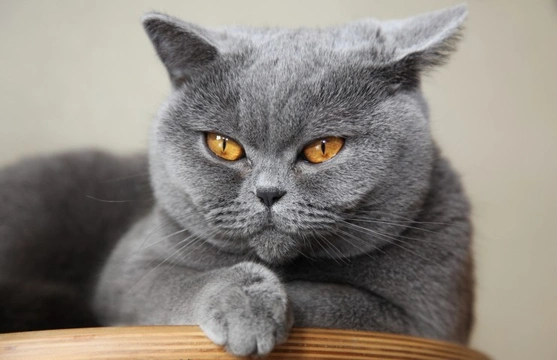
Introducing the British shorthair: The UK’s most popular cat breed
The British shorthair is the most popular pedigree cat breed in the UK, with more cats of this breed being registered annually with the GCCF or Governing Council of the Cat Fancy than any other.
The fact that the breed originates within the UK certainly helps to contribute to their popularity – but there are a whole host of other reasons that help to ensure that the British shorthair is the nation’s favourite, and has been for many years.
If you own a British shorthair cat or are browsing adverts for British shorthair kittens for sale, the chances are that you’ve already fallen for their charms. However, if you are wondering what makes the breed so enduringly popular and if they might be the right choice of cat for you, we’ll look at the breed in more detail within this article to help you to find out more.
What is a British shorthair?
The British shorthair is a pedigree cat breed that first gained formal recognition as a breed in its own right back in the 1870’s, and which has never really fallen out of popularity since. However, as was the case with many other cat breeds (and dog breeds too) the devastating effect that World War II and its aftermath had on the UK placed the breed at risk of dying out entirely in the years following the war.
The breed was saved and its numbers replenished over time thanks to the efforts of individuals breeders in the post-war years, which also saw a degree of outcrossing with other breeds including the Persian, Burmese and Russian blue to ensure the breed’s survival in perpetuity.
The British shorthair appearance
The British shorthair cat breed is distinctive due to its cobby or stocky appearance, which results in a cat with soft, rounded curves and a relatively square face, giving them a look that people often liken to that of a teddy bear!
They have short fur as the name implies, which is very thick and plush and almost crisp to the touch, making them very stroke-able! They can also be found in a huge range of different coat colours, which may be all one shade (known as self-coloured) or involving tabby, colourpoint, tipped or tortie coats too.
This means that there is a lot of variation in breeds and patterns across the British shorthair as a whole, and cats of the breed have either blue or orange eyes – or in the case of some white-coated variants, one of each!
Is the breed as a whole healthy and long-lived?
Because the British shorthair cat breed is very long established and also benefits from the genetic diversity achieved by outcrossing in breeding programs after the war, as well as a large number of unique, unrelated cats within the gene pool, they tend to be healthy and long-lived.
The average life expectancy of the British shorthair cat is 14-20 years, which makes them very long lived, and they tend to be healthy and stay active and fit well into old age too.
However, like many pedigree cat breeds, there are a couple of hereditary health problems found within the breed as a whole, which are polycystic kidney disease and hypertrophic cardiomyopathy. Anyone considering buying a British shorthair kitten is advised to talk to its breeder about the health of the cat’s parents and ancestors, and find out if the parent cats were DNA screened for the markers of these conditions prior to breeding.
What is it like living with a British shorthair?
The breed’s long-established history, good looks and tendency to robust health aren’t the only factors that contribute to their popularity – they are also in great demand due to their excellent personalities too! They are placid, laid back cats that don’t tend to be highly strung or suffering unduly from stress, and they are both personable and affectionate as well as tending to be quite independent and moderately active.
Cats of the breed that are allowed free access to outside will tend to spend several hours a day exploring and potentially, hunting, but they tend to come back in regularly too and very much enjoy cuddling up on the sofa for some attention. They are not among the most active of cat breeds but do enjoy variety and the ability to play outside and join in with a game of chasing a ribbon or ball at home too!
An alternative option – the British longhair
It is also worth mentioning a close relative of the British shorthair that possesses many of the same traits – the British longhair. This breed is actually semi-longhaired and so their coats won’t reach the same impressive lengths as, say, a Persian, but it still produces a distinctive, soft fur coat that is very appealing!
This breed was developed as a variant of the British shorthair – although it has not yet received recognition in its own right by the Governing Council of the at Fancy.
Aside from their longer coats, they have a lot in common with their shorthaired cousins, so this is another breed to bear in mind if you are still trying to narrow down your options!



